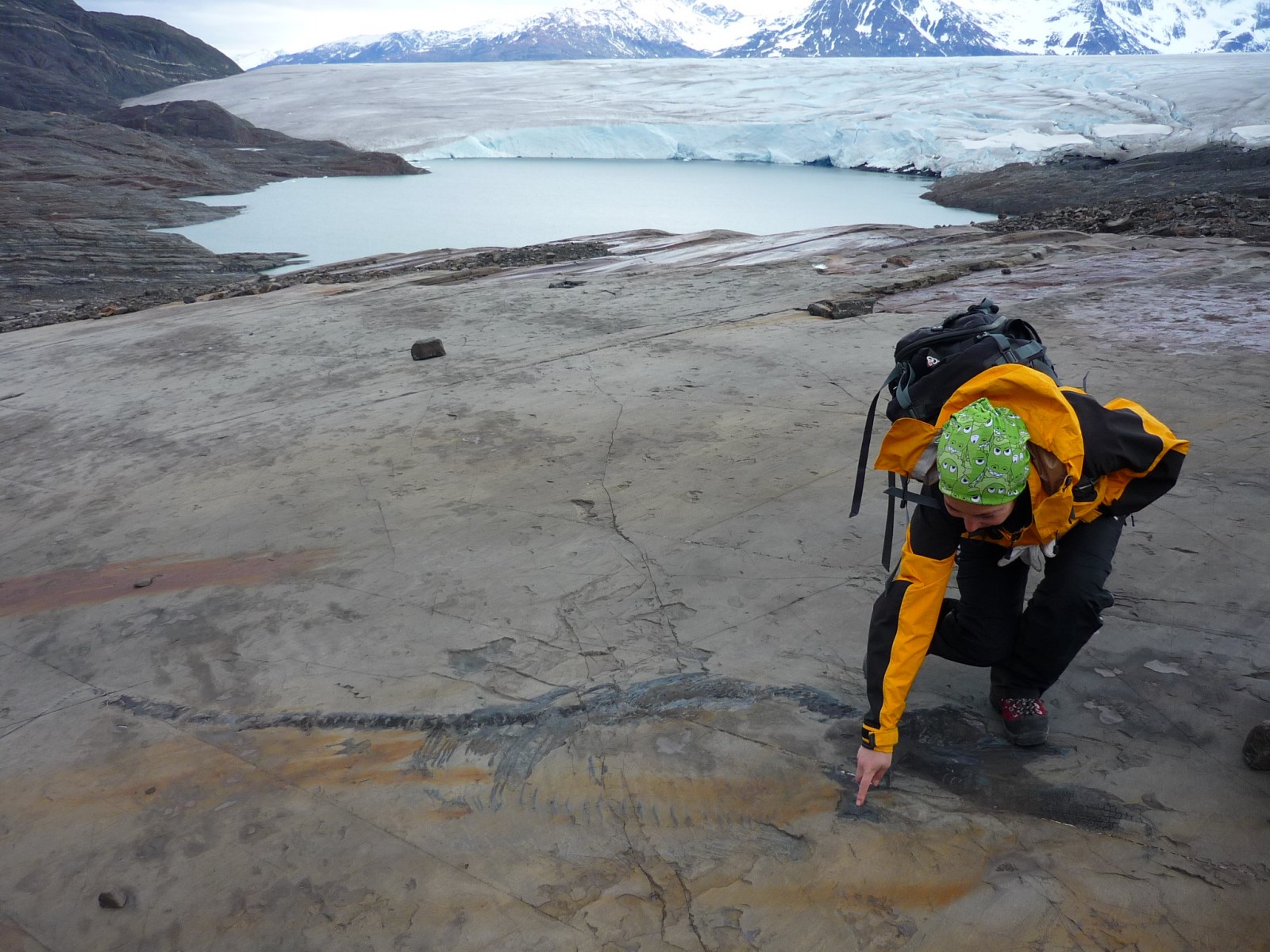A melting glacier in Patagonia made way for Chilean researchers to unearth the country’s first complete ichthyosaur, and nearly two dozen other fossils.
A team of researchers at the University of Magallanes (UMAG) led an expedition to the Tyndall Glacier in Chilean Patagonia in March and April to find the remains of a four meter long ancient marine reptile. Female and pregnant with a few embryos still nestled among her remains, the fossil was dug back up after first being discovered in 2009 by the lead of the same team, Dr. Judith Pardo-Pérez, associate professor at UMAG.
Videos by VICE
The remains of the beast, which the team nicknamed Fiona, were the result of a 31-day expedition that saw researchers hike 10 hours to the remote excavation site alone, where they camped in tents.
During the expedition, 23 new specimens were discovered at an incredible rate, per a press release on the finding. “On those days when the team could reach the site, they documented the ichthyosaurs and other fossils and discovered new specimens. Amazingly, on average, two ichthyosaurs were found every day,” Dean Lomax, paleontologist and visiting scientist at the University of Manchester said in the release.
Dr. Pardo-Pérez said in the release that, after this year’s trip, she’s confident the region is home to the “most abundant and best preserved” cretaceous ichthyosaur deposit in the world.

“We hope to obtain results on the diversity, disparity and paleobiology of the ichthyosaurs of the Tyndall Glacier locality,” she said in the release, noting that further investigating the diversity of the region will help the team better understand how the ichthyosaurs are connected to those in other latitudes.
“The fact that these incredible ichthyosaurs are so well preserved in an extreme environment, revealed by a retreating glacier, is unlike anywhere else in the world,” Lomax said. “The considerable number of ichthyosaurs found in the area, including complete skeletons of adults, juveniles, and newborns provides a unique window into the past.”
The team traced Fiona, which they helicoptered out of the glacier for study, to the Valanginian-Hauterivian age, a stage of the Early Cretaceous period (which ended with the extinction of dinosaurs) that took place roughly between 129 and 139 million years ago. Ichthyosaurs are warm-blooded marine reptiles that perhaps most closely resemble dolphins or swordfish; with long rostrums and small, pointy teeth.
“We do not have many marine reptile fossils from this time period worldwide and the ones we have are from Europe,” Dr. Erin Maxwell, expedition team member and curator of marine reptiles and fossil fishes for the State Museum of Natural History in Stuttgart said in the release.
This year’s expedition was one of more than ten trips that Dr. Pardo-Pérez has made to the Tyndall fossil site since 1997, where 55 mile per hour winds and heavy precipitation created roadblocks around the excavation and preservation process. The team built a hangar over Fiona to protect her from the elements, and used diamond toolsto drill and break hard blocks of rock that surrounded her body—tougher tools than the usual lump hammer, chisel and brush.
The Río Seco Natural History Museum in Punta Arenas is currently preparing Fiona for study and exhibition, but Dr. Pardo-Pérez says she’s concerned about the other ichthyosaur fossils that will never make it out.
“We have almost a hundred ichthyosaurs in the Tyndall Glacier fossil deposit and many of them, unfortunately, will never be excavated, due to the difficulty of access, being in risk areas,” she said. “The ichthyosaurs that will not be excavated need protection and consolidation in situ, as the erosion to which they are being subjected on a daily basis is destroying them.”
More
From VICE
-

WWE -

Collage by VICE -

Screenshot: Mintrocket -

Collage by VICE
